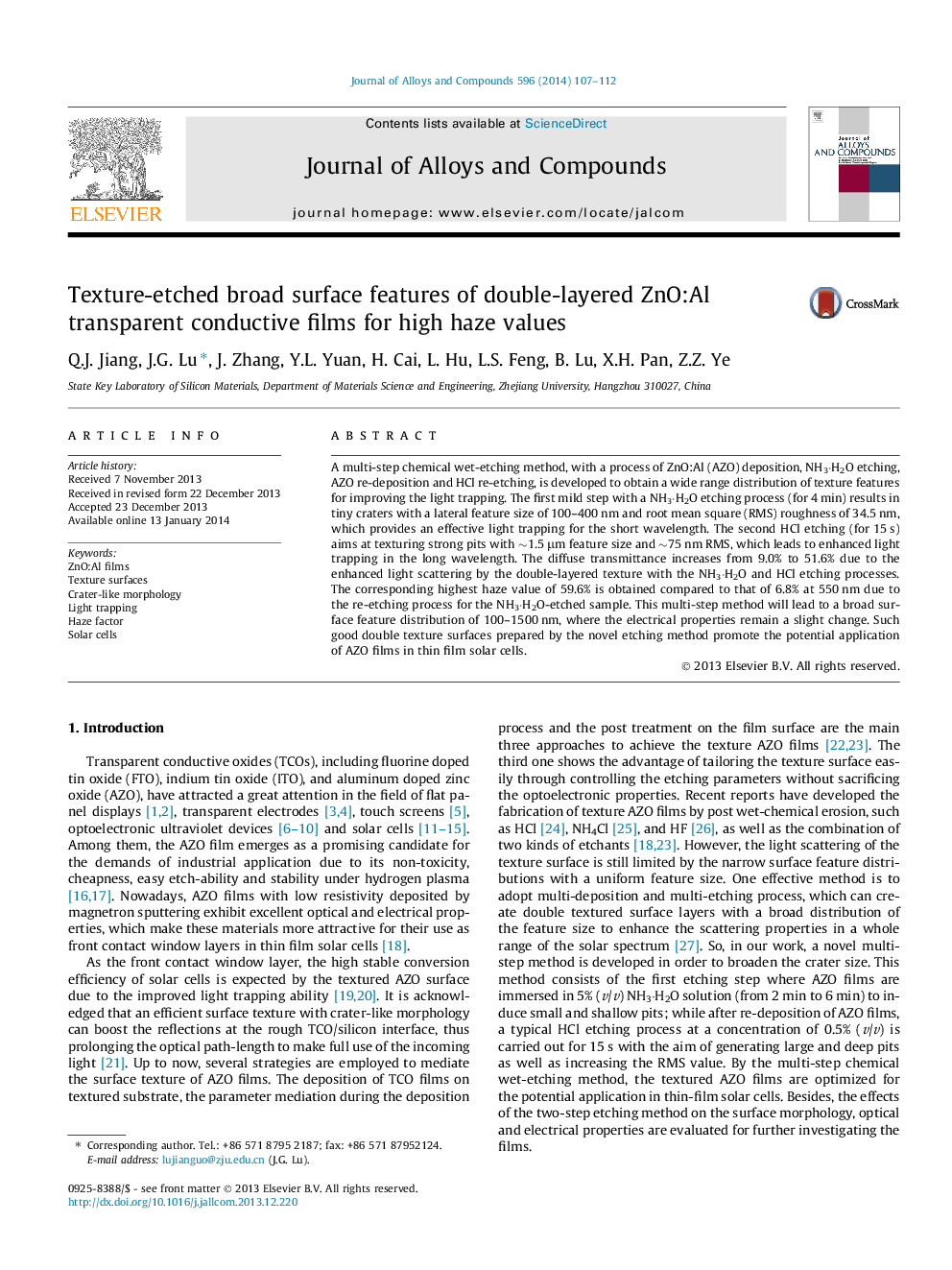| Article ID | Journal | Published Year | Pages | File Type |
|---|---|---|---|---|
| 1611552 | Journal of Alloys and Compounds | 2014 | 6 Pages |
Abstract
A multi-step chemical wet-etching method, with a process of ZnO:Al (AZO) deposition, NH3â
H2O etching, AZO re-deposition and HCl re-etching, is developed to obtain a wide range distribution of texture features for improving the light trapping. The first mild step with a NH3â
H2O etching process (for 4 min) results in tiny craters with a lateral feature size of 100-400 nm and root mean square (RMS) roughness of 34.5 nm, which provides an effective light trapping for the short wavelength. The second HCl etching (for 15 s) aims at texturing strong pits with â¼1.5 μm feature size and â¼75 nm RMS, which leads to enhanced light trapping in the long wavelength. The diffuse transmittance increases from 9.0% to 51.6% due to the enhanced light scattering by the double-layered texture with the NH3â
H2O and HCl etching processes. The corresponding highest haze value of 59.6% is obtained compared to that of 6.8% at 550Â nm due to the re-etching process for the NH3â
H2O-etched sample. This multi-step method will lead to a broad surface feature distribution of 100-1500Â nm, where the electrical properties remain a slight change. Such good double texture surfaces prepared by the novel etching method promote the potential application of AZO films in thin film solar cells.
Related Topics
Physical Sciences and Engineering
Materials Science
Metals and Alloys
Authors
Q.J. Jiang, J.G. Lu, J. Zhang, Y.L. Yuan, H. Cai, L. Hu, L.S. Feng, B. Lu, X.H. Pan, Z.Z. Ye,
